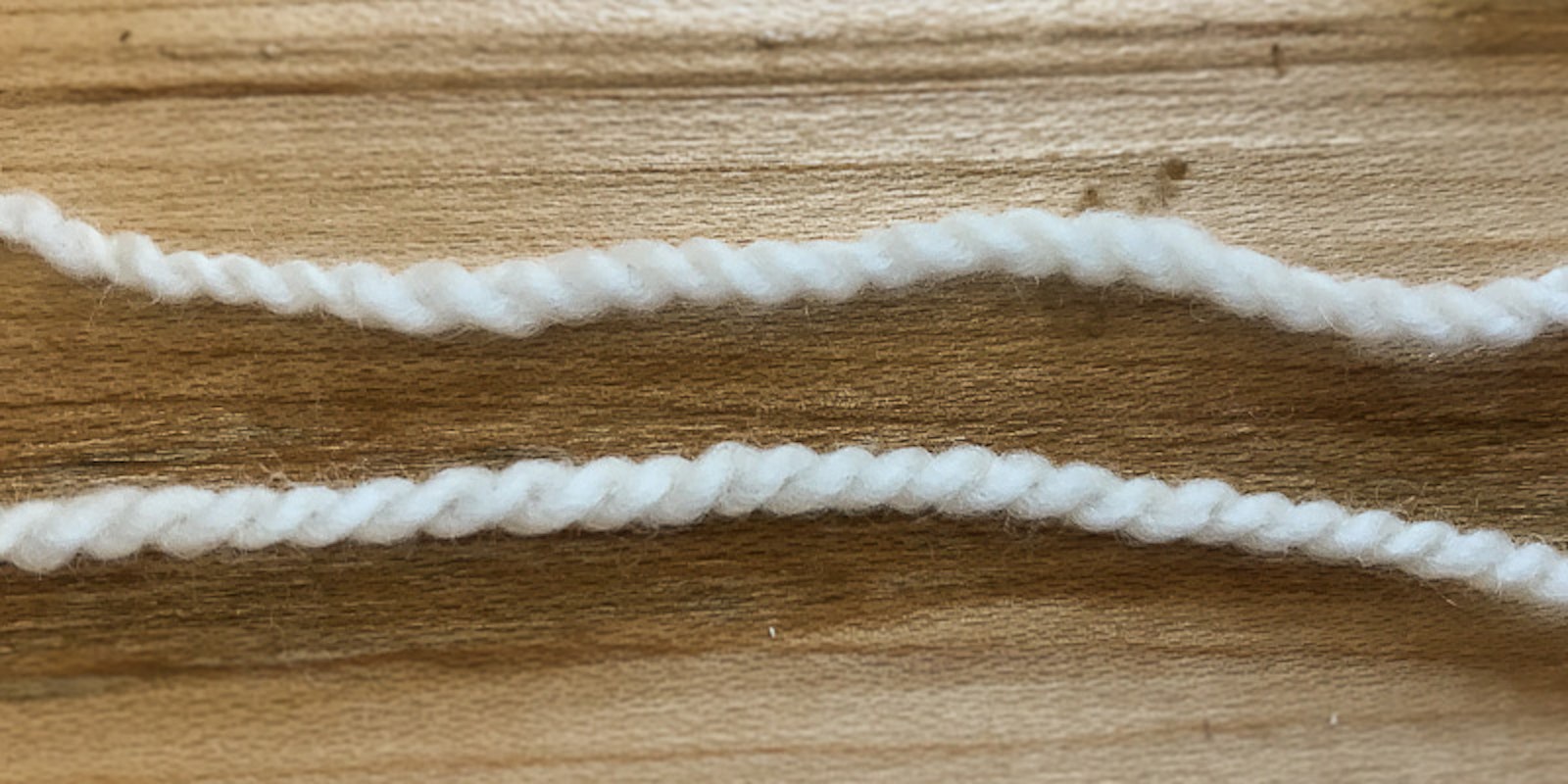Is spinning right ever wrong? Most millspun and handspun yarns I encounter are spun right (Z) and plied left (S). While this is the most common, there are some interesting reasons to reverse directions. Two-end knitting, also called twined knitting or tvåändsstickning, typically calls for Z-plied yarns and makes a great project for the knitter who spins.
Most modern commercial yarns and handspun yarns are created with Z (right) spun singles and S (left) ply twist. Illustration by Ann Sabin Swanson
To create these firm knitted fabrics, two yarns are worked alternately and twisted, or twined, along the row. The extra density of the fabric is useful, but the extra twisting of the yarns can lead to a harsh fabric. Z-plied yarns untwist slightly in the hands of most knitters, allowing some loft and softness to develop in twined mittens, socks, and sweaters.
There are a few millspun Z-plied yarns available, but we handspinners can simply create the yarn we want. Here’s a plan for getting started.
Spinner’s Study: Twined Knitting
Step 1
Most traditional twined yarns are 2-ply fingering-weight wool. They really do work well for these projects, and it’s a good place to start. Create one, small, sample skein that is spun in the typical direction: singles spun right (Z) and plied left (S). Next, create a sample skein that reverses the twist but is otherwise as similar to the first skein as possible. Some people find spinning the opposite direction an unexpected challenge. Watch your fingers carefully during spinning to make sure you are not rolling the yarn as you draft.
Step 2
Finish the skeins. Wash in warm to hot water and rinse in warm to cold water. This will help settle the twist as well as revive the crimp and any natural loft that was subdued during fiber processing and spinning. After the yarn is fully dry, wind each of the skeins into balls.
Step 3
Begin working a stockinette swatch in the round or flat using both ends of the first sample skein. When you’re ready, switch to the second skein (using both ends of the ball once again).
Step 4
Wash the swatch and lay flat to dry. What do you think? Do you like the S or Z yarn better? Did the yarn have enough ply twist?
[envira-gallery slug="roving-reporter-twined-knitting"]
From experience, I know that my personal twining technique removes quite a lot of twist compared to some knitters, so I need to add more ply twist than you might. I also have spinner friends who prefer to work with S-plied yarns for two-end knitting—the choice is yours! A few swatches done with different twist directions, amounts of twist, or fiber choices will give you loads of information about your unique yarns and knitting.
To find patterns for twined knitting, try books by Anne-Maj Ling or Lucinda Guy.
—Kate Larson
Featured Image: Same fiber, same structure, same knitter--how will these S and Z yarns work for twined knitting? Photos by Kate Larson


